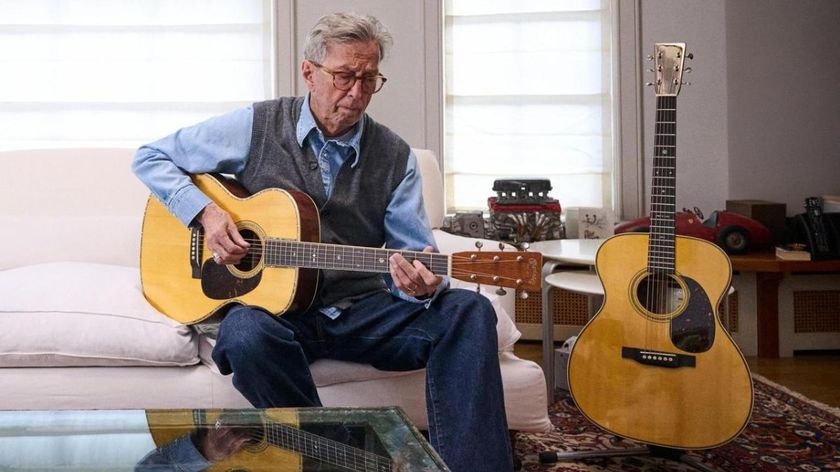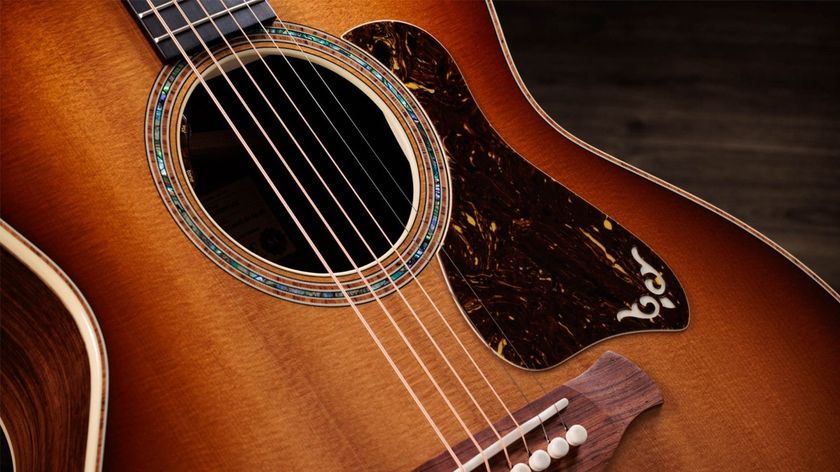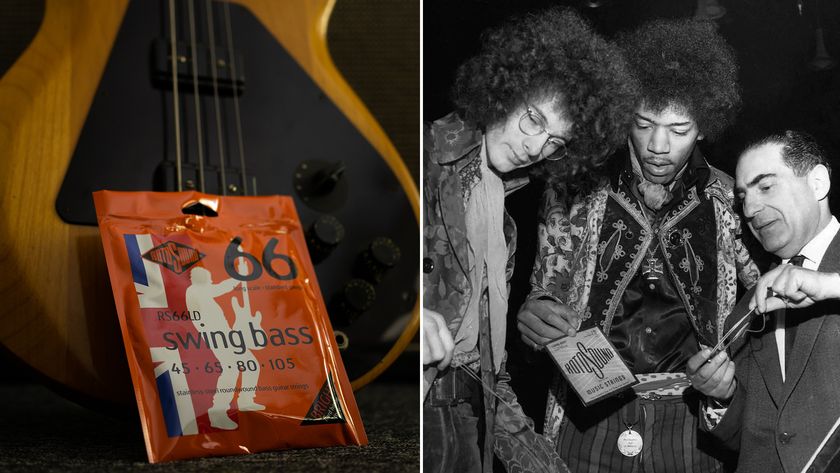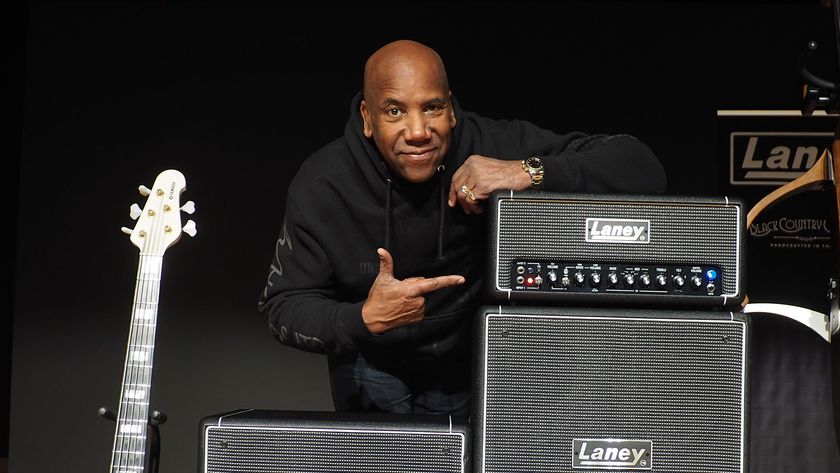Amplifying Your Acoustic: The Oxymoron and the Paradox

The first thing you have to realize when amplifying an acoustic guitar is that in doing so you’ve gone interactive, which sounds very nice except that it happens to work against you in this situation. What do I mean by “interactive?” Just that your acoustic guitar interacts with its sonic environment, and when that environment gets loud, acoustic guitars get weird.
The acoustic nature of a hollow-bodied guitar means that it puts out sound from its top and soundhole and also receives sound from the air, so you can think of the guitar top and air chamber as simultaneously acting as a loudspeaker and a microphone.
Not only is the frequency response of the acoustic guitar not “flat” in the way we like high-fidelity loudspeakers and studio microphones to be, but it changes with volume, particularly in the amplified sound field to which the guitar is subject.
While a particular guitar plugged in may sound wonderful in a small, well-damped club, where you don’t need much SPL (sound pressure level), get it on a big stage and try to crank it, and it just goes straight to hell.
So, what does a poor boy playing in a rock and roll band have to do when he wants that faux unplugged experience? Answering that question is the raison d’etre of this column. Yes, we’re going for the Zen of plugged-in-unplugged here.
Because the fact is that once you plug in an acoustic guitar, your amplification gear is as much a part of the instrument as its body, bridge and pickup. Furthermore, the gear that is the actual source of your sound often matters more than the guitar and/or the pickup system.
Today we’re going to take a look at the loudspeakers. You’ve usually got three basic systems going here: the PA main speakers, your monitor speaker(s) and perhaps an “acoustic” amplifier. To produce an amplified sound that will approximate that of an acoustic guitar, you need wide-range speakers with very low distortion--just the opposite of what most electric guitarists would choose.
Get The Pick Newsletter
All the latest guitar news, interviews, lessons, reviews, deals and more, direct to your inbox!
These speakers must be more like studio monitors in that you’ll need fairly flat response, from about 50Hz on up to as high as 15 or 20kHz. This requires using at least a two-way system with woofer and tweeter, or maybe a three-way system with an additional dedicated mid-range driver.
These are now standard for PA mains and monitor cabinets, and multi-driver speaker systems have really become the norm for dedicated acoustic amps. These acoustic amps are in many ways like mini PA systems in and of themselves, with two or even more channels, instruments and mic inputs, effects loops, tuner outputs and XLR direct outputs for connection to a PA.
Your “acoustic amp” speakers need to be capable of handling a wide dynamic range…much wider, in fact, than typical electric guitar speakers handling a greatly compressed signal.
Wide dynamic range requires power, much more power for the kind of reserve headroom acoustic guitars need. I often go by a rule of thumb that may initially sound outrageous: if you play in a band with a medium-loud electric lead player and truly wish to be heard, your amp should have at least ten times the power of his. Yes, if the lead guitarist has a 50-Watt Marshall and you want your acoustic to sound loud and tuneful and blend well, you should have about 500 Watts at your disposal. That may be pushing the point, but not by much.
The reason for this is that with electric guitars, the distortion inherent in the amp and speakers becomes a part and parcel of the sound. It’s that tickling of the amp’s overload characteristics that make even a “clean” electric guitar sound… electric. Part of the amp sound is distortion and part is comprehension of the dynamic range, and those are two characteristics you generally do not want in your amplified acoustic guitar tone.
So, headroom and wide range speakers are what you need when amplifying your acoustic. These will bring you much closer to the characteristics of PA speakers and monitors than to that 50-watt Marshall you love cranking your Strat though. In the next few columns we’ll delve into some different approaches to loudspeakers, dedicated acoustic amplifiers and other components that can help get that Taylor or Martin of yours up front in a mix, even with a rock and roll band roaring behind you.

“Eric’s legendary performance sparked a resurgence in acoustic music”: Martin celebrates 30th anniversary of Eric Clapton’s first signature acoustic with a faithful recreation of his MTV Unplugged guitar

“An investment-grade, pro-quality guitar that will provide decades of playing enjoyment before it becomes a treasured family heirloom”: Taylor Gold Label 814e SB review











